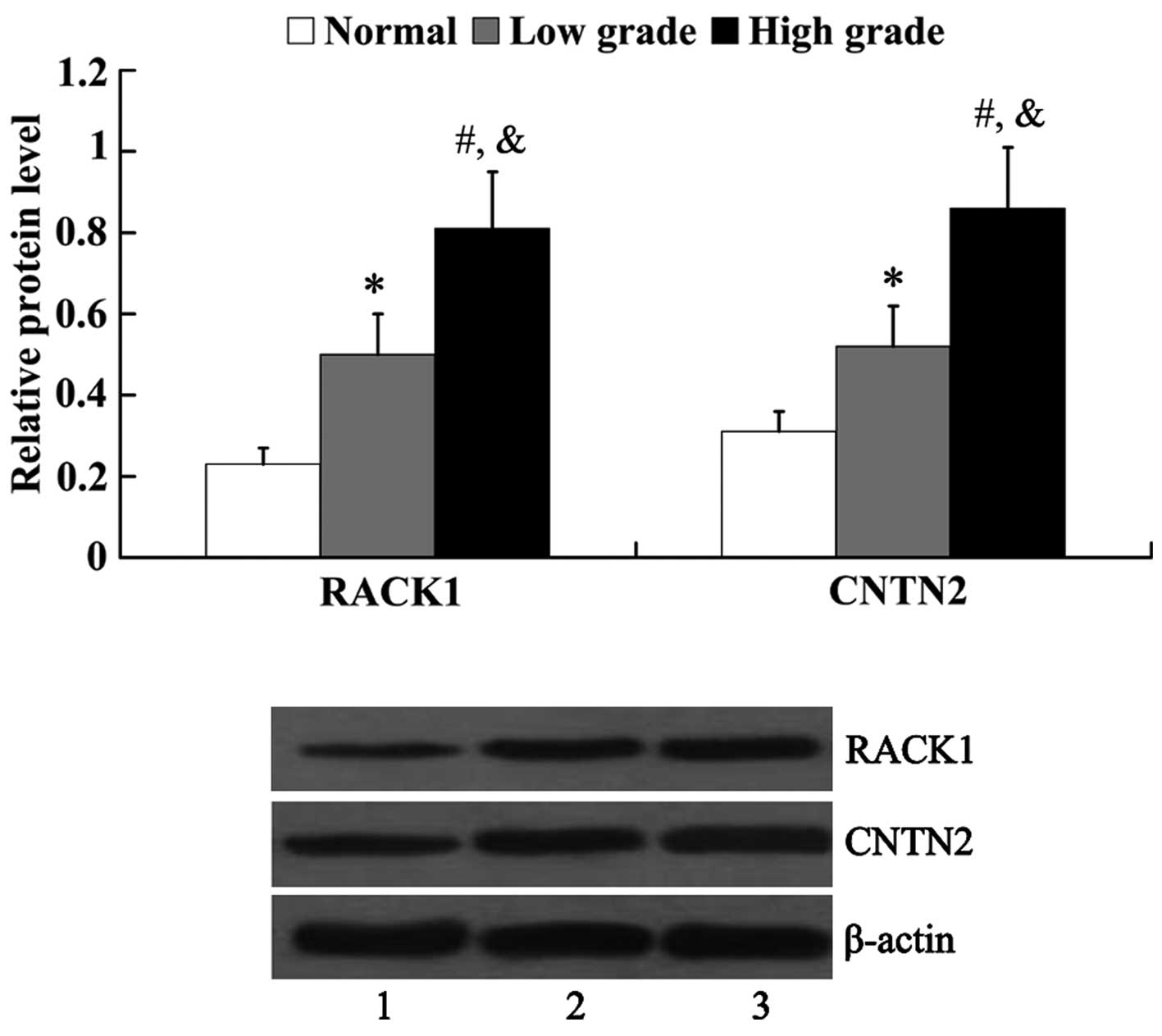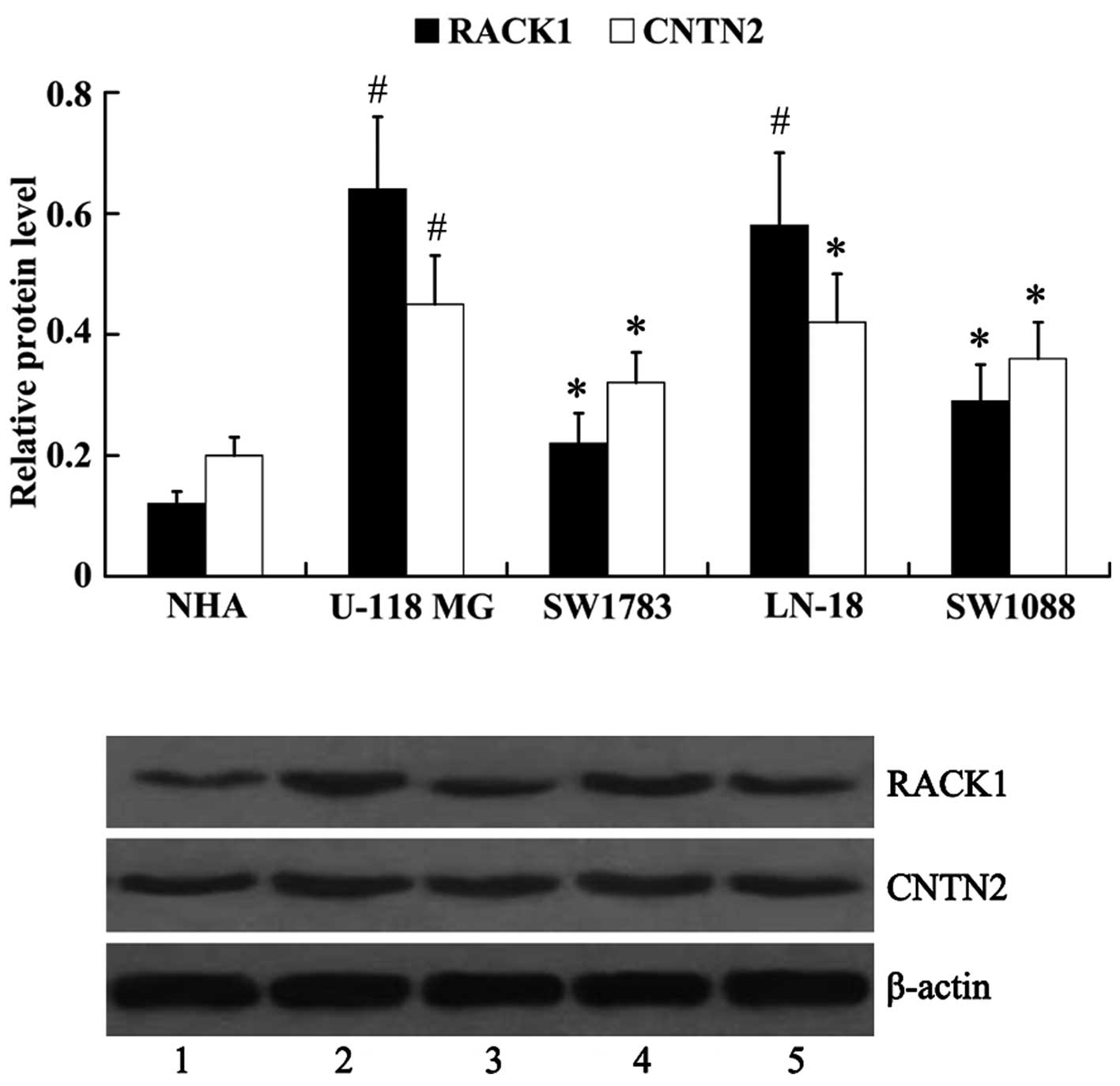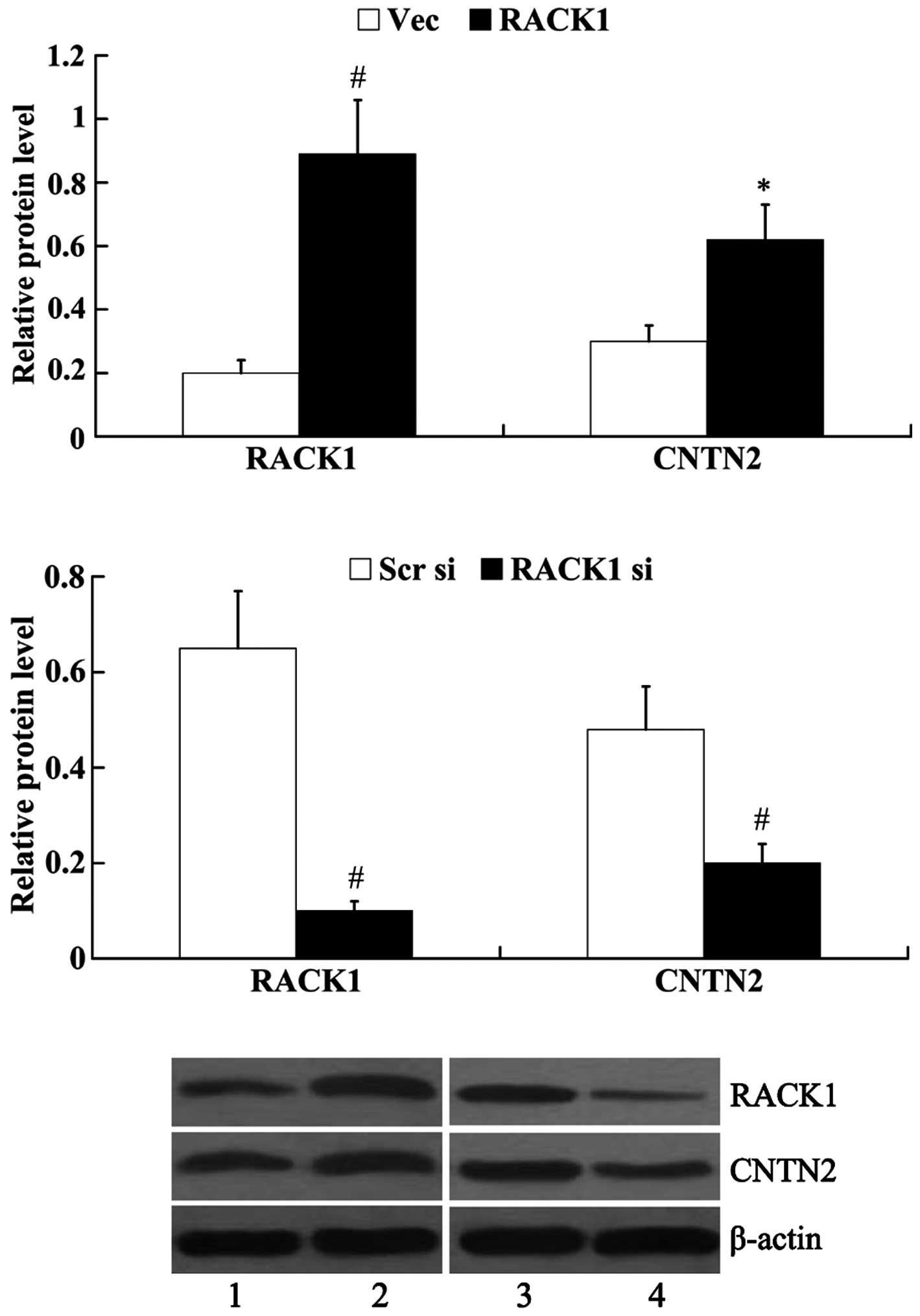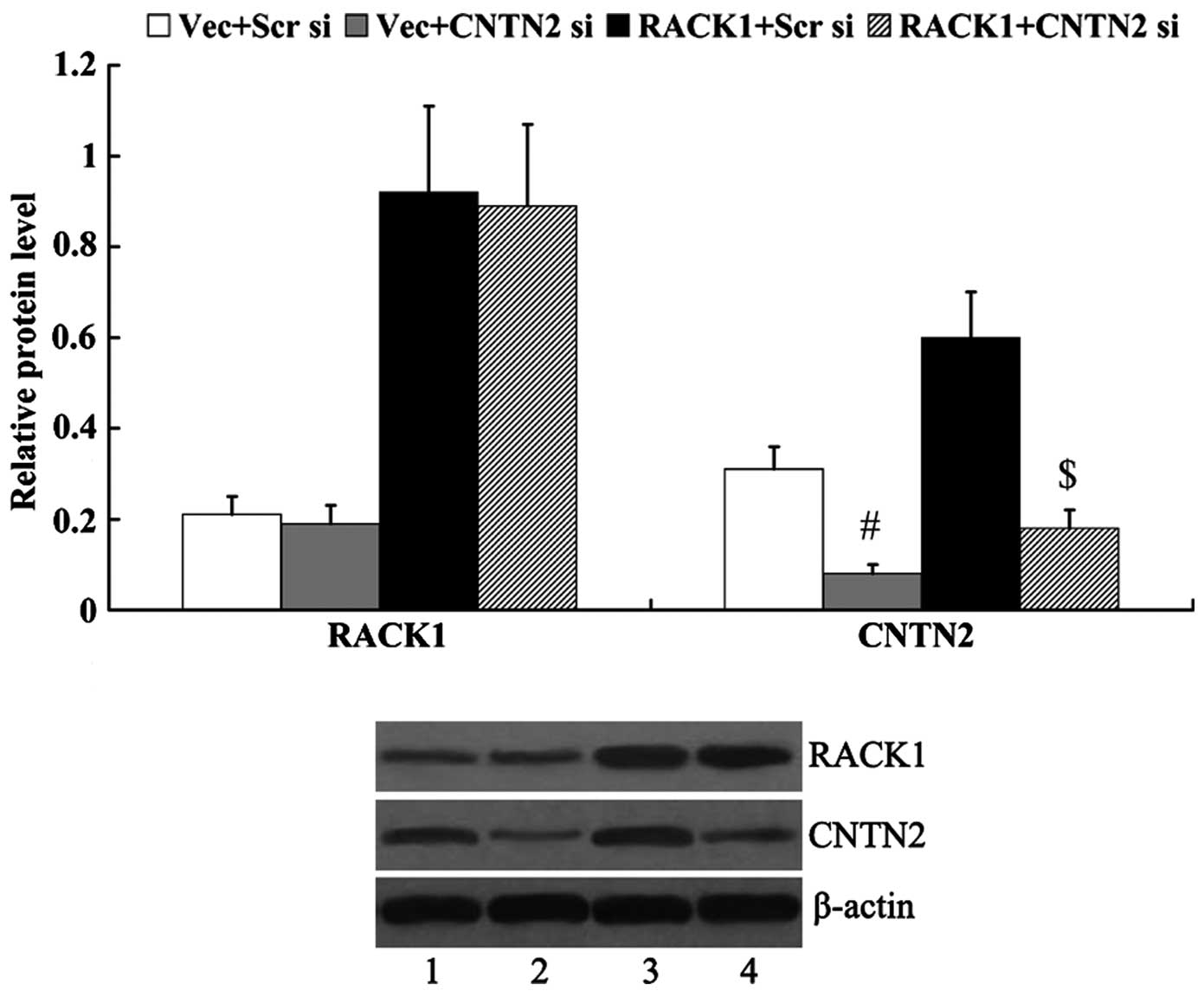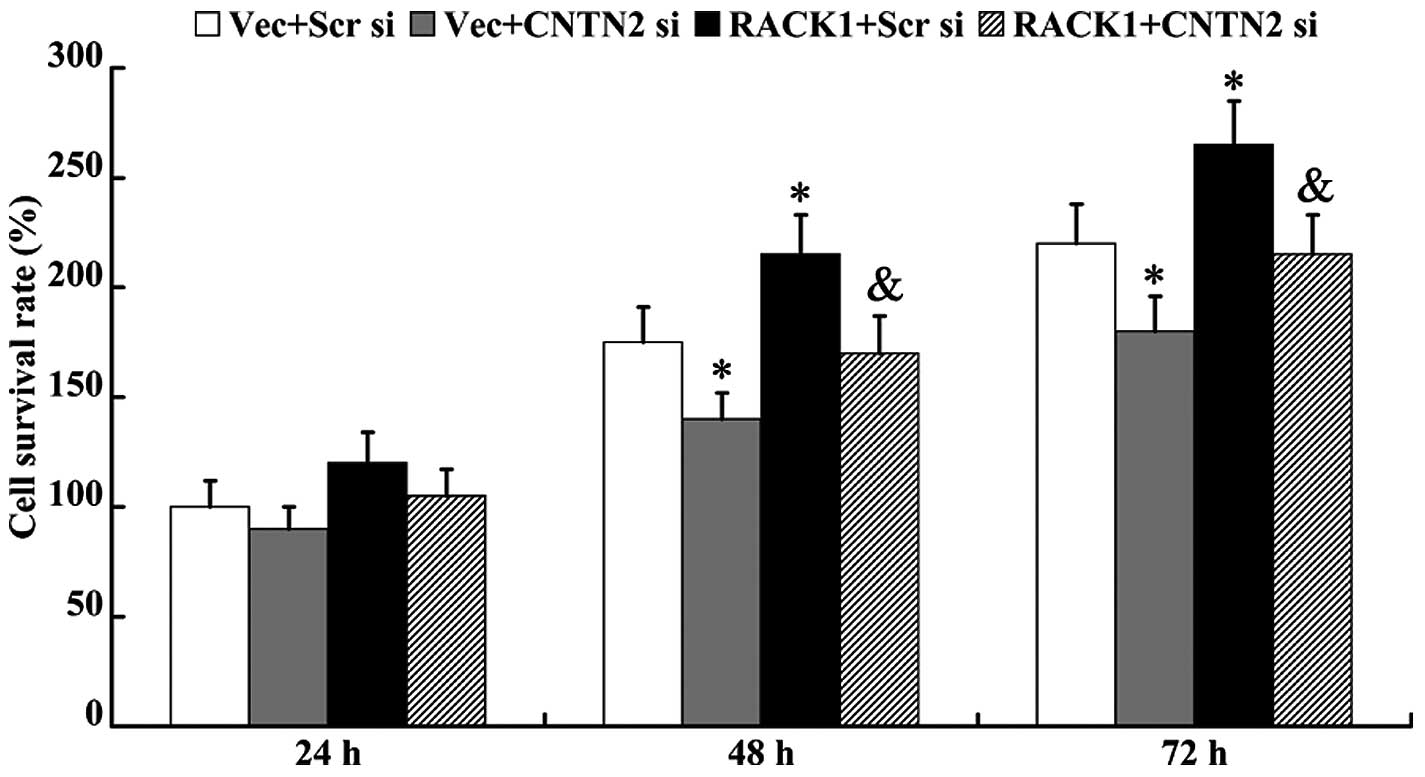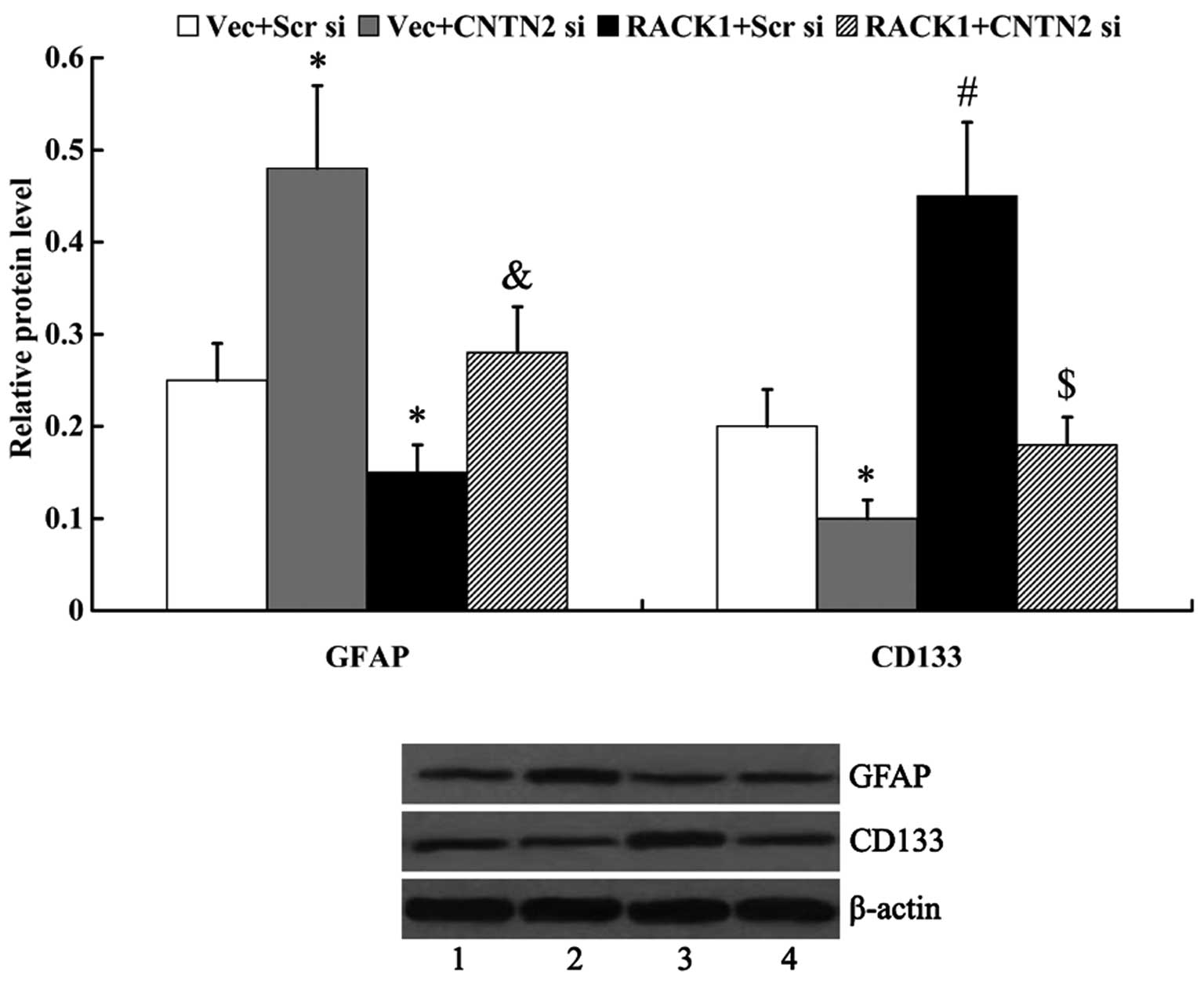|
1
|
Katsetos CD, Dráberová E, Smejkalová B,
Reddy G, Bertrand L, de Chadarévian JP, Legido A, Nissanov J, Baas
PW and Dráber P: Class III beta-tubulin and gamma-tubulin are
co-expressed and form complexes in human glioblastoma cells.
Neurochem Res. 32:1387–1398. 2007. View Article : Google Scholar : PubMed/NCBI
|
|
2
|
Arko L, Katsyv I, Park GE, Luan WP and
Park JK: Experimental approaches for the treatment of malignant
gliomas. Pharmacol Ther. 128:1–36. 2010. View Article : Google Scholar : PubMed/NCBI
|
|
3
|
Yacoub A, Hamed HA, Allegood J, Mitchell
C, Spiegel S, Lesniak MS, Ogretmen B, Dash R, Sarkar D, Broaddus
WC, et al: PERK-dependent regulation of ceramide synthase 6 and
thioredoxin play a key role in mda-7/IL-24-induced killing of
primary human glioblastoma multiforme cells. Cancer Res.
70:1120–1129. 2010. View Article : Google Scholar : PubMed/NCBI
|
|
4
|
Hamed HA, Yacoub A, Park MA, Eulitt PJ,
Dash R, Sarkar D, Dmitriev IP, Lesniak MS, Shah K, Grant S, et al:
Inhibition of multiple protective signaling pathways and Ad.5/3
delivery enhances mda-7/IL-24 therapy of malignant glioma. Mol
Ther. 18:1130–1142. 2010. View Article : Google Scholar : PubMed/NCBI
|
|
5
|
Yu H, Park J, Lee J, Choi K and Choi C:
Constitutive expression of MAP kinase phosphatase-1 confers
multi-drug resistance in human glioblastoma cells. Cancer Res
Treat. 44:195–201. 2012. View Article : Google Scholar : PubMed/NCBI
|
|
6
|
Xing WJ, Zou Y, Han QL, Dong YC, Deng ZL,
Lv XH, Jiang T and Ren H: Effects of epidermal growth factor
receptor and phosphatase and tensin homologue gene expression on
the inhibition of U87MG glioblastoma cell proliferation induced by
protein kinase inhibitors. Clin Exp Pharmacol Physiol. 40:13–21.
2013. View Article : Google Scholar
|
|
7
|
Gandin V, Senft D, Topisirovic I and Ronai
ZA: RACK1 Function in Cell Motility and Protein Synthesis. Genes
Cancer. 4:369–377. 2013. View Article : Google Scholar : PubMed/NCBI
|
|
8
|
Adams DR, Ron D and Kiely PA: RACK1, a
multifaceted scaffolding protein: structure and function. Cell
Commun Signal. 9:222011. View Article : Google Scholar : PubMed/NCBI
|
|
9
|
McCahill A, Warwicker J, Bolger GB,
Houslay MD and Yarwood SJ: The RACK1 scaffold protein: a dynamic
cog in cell response mechanisms. Mol Pharmacol. 62:1261–1273. 2002.
View Article : Google Scholar : PubMed/NCBI
|
|
10
|
Li JJ and Xie D: RACK1, a versatile hub in
cancer. Oncogene. 34:1890–1898. 2015. View Article : Google Scholar
|
|
11
|
Wang N, Liu F, Cao F, Jia Y, Wang J, Ma W,
Tan B, Wang K, Song Q and Cheng Y: RACK1 predicts poor prognosis
and regulates progression of esophageal squamous cell carcinoma
through its epithelial-mesenchymal transition. Cancer Biol Ther.
16:528–540. 2015. View Article : Google Scholar : PubMed/NCBI
|
|
12
|
Choi YY, Lee SY, Lee WK, Jeon HS, Lee EB,
Lee HC, Choi JE, Kang HG, Lee EJ, Bae EY, et al: RACK1 is a
candidate gene associated with the prognosis of patients with early
stage non-small cell lung cancer. Oncotarget. 6:4451–4466. 2015.
View Article : Google Scholar : PubMed/NCBI
|
|
13
|
Lin Y, Cui M, Teng H, Wang F, Yu W and Xu
T: Silencing the receptor of activated C-kinase 1 (RACK1)
suppresses tumorigenicity in epithelial ovarian cancer in vitro and
in vivo. Int J Oncol. 44:1252–1258. 2014.PubMed/NCBI
|
|
14
|
Peng R, Jiang B, Ma J, Ma Z, Wan X, Liu H,
Chen Z, Cheng Q and Chen R: Forced downregulation of RACK1 inhibits
glioma development by suppressing Src/Akt signaling activity. Oncol
Rep. 30:2195–2202. 2013.PubMed/NCBI
|
|
15
|
Su J, Xu J and Zhang S: RACK1, scaffolding
a heterotrimeric G protein and a MAPK cascade. Trends Plant Sci.
20:405–407. 2015. View Article : Google Scholar : PubMed/NCBI
|
|
16
|
Shi S, Deng YZ, Zhao JS, Ji XD, Shi J,
Feng YX, Li G, Li JJ, Zhu D, Koeffler HP, et al: RACK1 promotes
non-small-cell lung cancer tumorigenicity through activating sonic
hedgehog signaling pathway. J Biol Chem. 287:7845–7858. 2012.
View Article : Google Scholar : PubMed/NCBI
|
|
17
|
Chen Y, Wang L, Xu H, Liu X and Zhao Y:
Exome capture sequencing reveals new insights into hepatitis B
virus-induced hepatocellular carcinoma at the early stage of
tumorigenesis. Oncol Rep. 30:1906–1912. 2013.PubMed/NCBI
|
|
18
|
Adair SJ, Carr TM, Fink MJ, Slingluff CL
Jr and Hogan KT: The TAG family of cancer/testis antigens is widely
expressed in a variety of malignancies and gives rise to
HLA-A2-restricted epitopes. J Immunother. 31:7–17. 2008. View Article : Google Scholar
|
|
19
|
Rickman DS, Tyagi R, Zhu XX, Bobek MP,
Song S, Blaivas M, Misek DE, Israel MA, Kurnit DM, Ross DA, et al:
The gene for the axonal cell adhesion molecule TAX-1 is amplified
and aberrantly expressed in malignant gliomas. Cancer Res.
61:2162–2168. 2001.PubMed/NCBI
|
|
20
|
Yu F and Fu WM: Identification of
differential splicing genes in gliomas using exon expression
profiling. Mol Med Rep. 11:843–850. 2015.
|
|
21
|
Birikh KR, Sklan EH, Shoham S and Soreq H:
Interaction of 'readthrough' acetylcholinesterase with RACK1 and
PKCbeta II correlates with intensified fear-induced conflict
behavior. Proc Natl Acad Sci USA. 100:283–288. 2003. View Article : Google Scholar
|
|
22
|
Wang CC, Lo HF, Lin SY and Chen H: RACK1
(receptor for activated C-kinase 1) interacts with FBW2 (F-box and
WD-repeat domain-containing 2) to up-regulate GCM1 (glial cell
missing 1) stability and placental cell migration and invasion.
Biochem J. 453:201–208. 2013. View Article : Google Scholar : PubMed/NCBI
|
|
23
|
Kundu N, Dozier U, Deslandes L, Somssich
IE and Ullah H: Arabidopsis scaffold protein RACK1A interacts with
diverse environmental stress and photosynthesis related proteins.
Plant Signal Behav. 8:e240122013. View Article : Google Scholar : PubMed/NCBI
|
|
24
|
Wee B, Charles N and Holland EC: Animal
models to study cancer-initiating cells from glioblastoma. Front
Biosci (Landmark Ed). 16:2243–2258. 2011. View Article : Google Scholar
|
|
25
|
Akhavan D, Cloughesy TF and Mischel PS:
mTOR signaling in glioblastoma: lessons learned from bench to
bedside. Neuro Oncol. 12:882–889. 2010. View Article : Google Scholar : PubMed/NCBI
|
|
26
|
Brümmendorf T and Rathjen FG: Axonal
glycoproteins with immunoglobulin- and fibronectin type III-related
domains in vertebrates: structural features, binding activities,
and signal transduction. J Neurochem. 61:1207–1219. 1993.
View Article : Google Scholar : PubMed/NCBI
|
|
27
|
Bizzoca A, Virgintino D, Lorusso L,
Buttiglione M, Yoshida L, Polizzi A, Tattoli M, Cagiano R, Rossi F,
Kozlov S, et al: Transgenic mice expressing F3/contactin from the
TAG-1 promoter exhibit developmentally regulated changes in the
differentiation of cerebellar neurons. Development. 130:29–43.
2003. View Article : Google Scholar
|
|
28
|
Schlessinger J: Cell signaling by receptor
tyrosine kinases. Cell. 103:211–225. 2000. View Article : Google Scholar : PubMed/NCBI
|
|
29
|
Simon MA: Receptor tyrosine kinases:
specific outcomes from general signals. Cell. 103:13–15. 2000.
View Article : Google Scholar : PubMed/NCBI
|
|
30
|
Carracedo A, Ma L, Teruya-Feldstein J,
Rojo F, Salmena L, Alimonti A, Egia A, Sasaki AT, Thomas G, Kozma
SC, et al: Inhibition of mTORC1 leads to MAPK pathway activation
through a PI3K-dependent feedback loop in human cancer. J Clin
Invest. 118:3065–3074. 2008.PubMed/NCBI
|
|
31
|
Wan X, Harkavy B, Shen N, Grohar P and
Helman LJ: Rapamycin induces feedback activation of Akt signaling
through an IGF-1R-dependent mechanism. Oncogene. 26:1932–1940.
2007. View Article : Google Scholar
|



